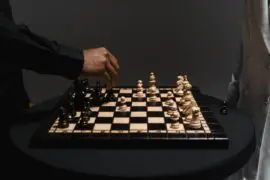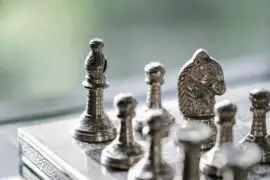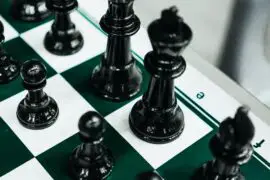What are 3 Illegal Moves in Chess? Chess, the timeless game of strategy and intellect, has fascinated minds across the globe for centuries. Its origins can be traced back to ancient India, and over time, it has evolved into a beloved pastime and a highly competitive sport. The simplicity of its board and pieces belies the depth of complexity hidden within its rules and gameplay.
In the realm of chess, much emphasis is placed on learning the legal moves, understanding tactics, and honing one’s skills to achieve victory over an opponent. However, a crucial aspect that is often overlooked is the understanding of illegal moves. While the legal moves grant us the freedom to maneuver our pieces strategically, the illegal moves set boundaries and define the essence of fair play.
In this article, we embark on a journey to explore the realm of illegal moves in chess. We delve beyond the conventional notions of capturing pieces and planning checkmates to unravel the hidden pitfalls that can lead to disaster on the chessboard. By grasping the significance of illegal moves, we can elevate our game and fortify our understanding of the game’s true spirit.
In the hallowed game of chess, where each move shapes the destiny of the battlefield, we shall learn to tread wisely and master the art of legal, ethical, and skillful play. Let us now embark on our exploration of the forbidden territories of chess, unearthing the “3 illegal moves” that every aspiring chess player must know.
Understanding the Rules of Chess
Contents
Before delving into the forbidden territories of chess, it’s paramount to have a solid understanding of the game’s basic rules.
The essence of chess lies in the unique movements of each piece and the strategies that can be woven from these maneuvers.
- The King: The king, the most vital piece, can move in any direction but only one square at a time. It’s the piece you must protect at all costs because if the king is checkmated, the game is lost.
- The Queen: The queen is the most powerful piece on the board and can move any number of squares along a rank, file, or diagonal.
- The Rook: The rooks, situated at the corners of the board at the start, can move any number of squares along a rank or file. They play a crucial role in controlling the board’s horizontal and vertical lines.
- The Bishop: The bishops can move any number of squares diagonally, meaning each bishop stays on the same color square throughout the game, either white or black.
- The Knight: The knights have a unique ‘L’-shape move: two squares in one direction and then one square perpendicular to that. The knights are the only pieces that can ‘jump’ over other pieces, both friendly and enemy pieces.
- The Pawn: The pawns are the foot soldiers, moving one square forward under normal circumstances but capturing diagonally. Additionally, they have a special initial move where they can move two squares forward from their original position. Pawns are also involved in several special rules like ‘en passant’ and promotion.
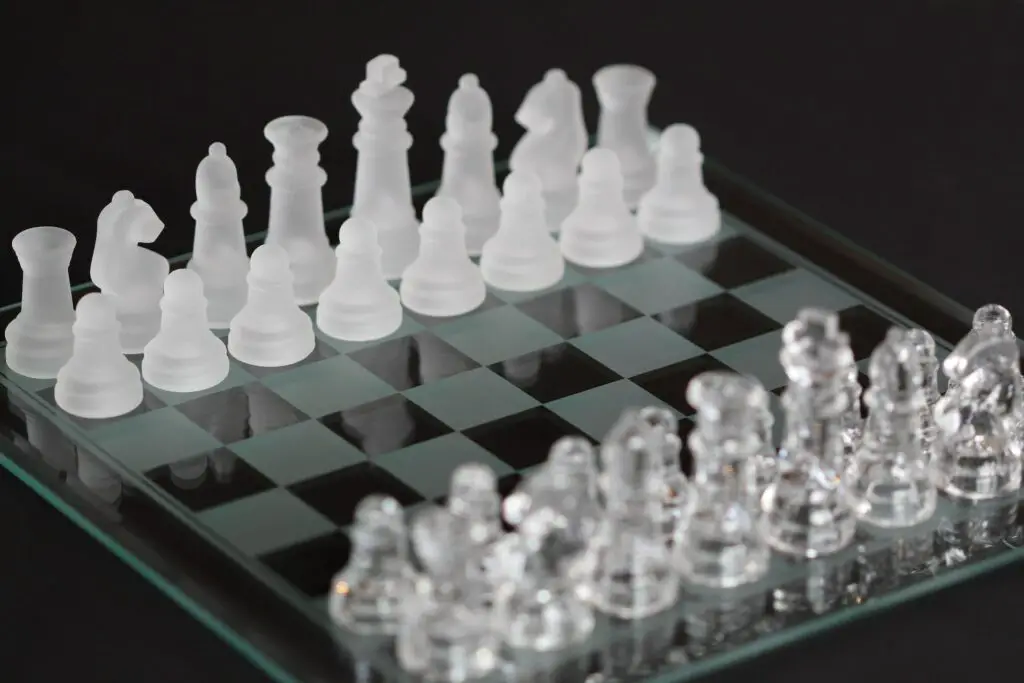
Illegal Move 1: Incorrect Movement of Pieces
The fundamental basis for the game of chess lies in the distinctive movement patterns of each piece. Disregarding these movements and proceeding with an incorrect move constitutes the first illegal move in chess.
To illustrate, the rook, a powerhouse on the board, moves any number of squares along a rank or file. An attempt to move the rook diagonally is an illegal move. Similarly, the bishop’s diagonal movements across the board are its strength. If a player were to move the bishop along a rank or file, like a rook, that would also be considered an illegal move.
The knight’s move is unique, in an L-shape pattern that is two squares in one direction and then one square perpendicular to that.
For the pawns, they move one square forward but capture one square diagonally forward. A common illegal move would be attempting to move a pawn backward or capture an opponent’s piece directly in front of it.
Lastly, both the king and the queen can move in any direction, but the king is limited to one square at a time, whereas the queen can move any number of squares. So moving the king more than one square in any direction or moving the queen like a knight would both be illegal moves.
Illegal Move 2: Leaving or Putting Your King in Check
In the grand battle of chess, the king is the heart of the game. All strategies, whether offensive or defensive, ultimately revolve around the safety of the king. In this context, the second illegal move we’re discussing is making a move that leaves or puts your king in check.
In essence, your king is in check if it’s under immediate threat of capture on your opponent’s next move. It is illegal to make a move that does not eliminate this threat. This could be by moving the king, blocking the check with another piece, or capturing the threatening piece. If a player makes a move while their king is in check and that move doesn’t alleviate the check, the move is illegal.

Let’s consider a scenario. If your king is in a line of attack from your opponent’s rook, and you decide to move another piece elsewhere on the board without addressing this threat, that would be an illegal move. The king cannot remain in check after your move is completed.
Similarly, it is against the rules to make a move that places your king in check. For example, if your king and queen are on the same diagonal line, with one of your pawns blocking an enemy bishop’s path to your king, moving this pawn elsewhere would place your king in check. This, again, would be an illegal move.
Illegal Move 3: Incorrect Castling
The final illegal move in our exploration is incorrect casting. Castling is a special move in chess, involving the king and one of the rooks. It’s the only move that allows a player to move two pieces simultaneously and serves as an essential strategy for protecting the king and connecting the rooks.
However, several conditions must be met for a legal castling move:
- The king and the chosen rook must not have moved previously in the game.
- There must be no pieces between the king and the rook.
- The king cannot be in check at the time of casting.
- The squares that the king crosses over must not be under attack, and the square where the king lands after casting must not be under attack.
If any of these conditions are not met, attempting to castle becomes an illegal move.
For example, if your king is in check and you attempt to castle, it’s an illegal move. Similarly, if you’ve moved your king earlier in the game, and then you attempt to castle, this too would be an illegal move. Another common scenario would be trying to castle while one of the squares the king must cross over is under attack by an opponent’s piece. This again would be an illegal casting move.
Consequences of Illegal Moves in Chess So, What are 3 Illegal Moves in Chess?
Illegal moves in chess aren’t just minor rule infractions; they have serious implications that can drastically affect the outcome of a game. Understanding the potential consequences of illegal moves in chess is as crucial as knowing what constitutes these moves in the first place.
In casual games between friends, an illegal move might simply result in a quick correction and a continuation of the game. However, in competitive chess, such as tournaments or professional matches, the consequences are much more severe.
According to the official chess rules set by FIDE (International Chess Federation), if a player makes an illegal move, the position before the irregularity must be reinstated. If the player’s opponent has not made a move, the offending player must make a legal move with the piece they touched. In the case where the incorrect move wasn’t noticed immediately, and several subsequent moves were played, the game continues from the current position unless the tournament rules state otherwise.
In addition, penalties can be applied. For the first illegal move in a game, the player receives a warning and, in a time-controlled game, two minutes are added to the opponent’s clock. However, if the same player makes a second illegal move in the same game, the result is a loss for that player. However, if it is not possible to checkmate the player’s king by any possible series of legal moves, the game is drawn.
By making an illegal move, a player risks not just immediate penalties, but also the loss of strategic advantage. An illegal move could disrupt your plans, distract you, and give your opponent a psychological edge. Moreover, repeatedly making illegal moves could harm a player’s reputation in the chess community.
Tips for Avoiding Illegal Moves
Making illegal moves in chess can be a critical setback in your game. Not only does it violate the rules, but it also disrupts your momentum and gives your opponent an advantage. To help you maintain the integrity of your game, here are some practical tips to avoid making the three illegal moves we’ve discussed.
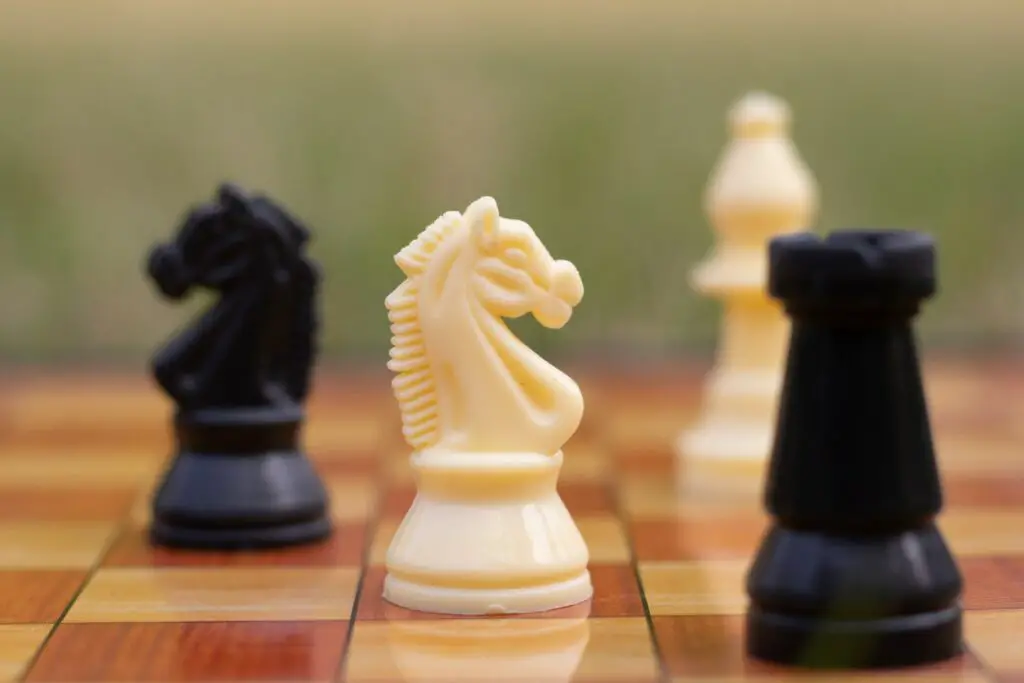
- Understand and Respect Each Piece’s Movement: Make it a point to thoroughly understand each piece’s unique movements. Regularly revisit the movement rules, especially when starting, to ensure that they are embedded in your memory. Playing regularly and practicing with different pieces will help reinforce these rules.
- Keep the King’s Safety Paramount: Always be mindful of your king’s safety. Regularly check whether your king is in a vulnerable position, and if so, make its safety your priority. Avoid moves that could potentially put your king in check.
- Be Mindful of Castling Conditions: Remember the conditions for castling and ensure they are all met before you decide to castle. Always check if the squares your king will cross, or end up on, are under attack.
- Double-Check Your Moves: Before finalizing your move, take a moment to mentally review the board and the move you’re about to make. This can help you spot any potential illegal moves before they occur.
- Learn from Your Mistakes: If you do make an illegal move, take the time to understand what went wrong and why. Use it as a learning opportunity to improve your understanding of the game’s rules.
- Practice: Lastly, like any other skill, avoiding illegal moves in chess comes with practice. The more you play, the more naturally the rules will come to you, and the less likely you will be to make illegal moves.
Conclusion
Chess is a game of strategy, intelligence, and respect for the rules. In our exploration of the question, “What are 3 illegal moves in chess?”, we have delved into the realm of incorrect piece movement, leaving or putting the king in check, and incorrect castling. These illegal moves serve as critical reminders of the boundaries within which the beautiful game of chess is played.
Understanding these illegal moves and why they are forbidden is not just about adherence to the rules; it is about improving your game, enhancing your strategy, and developing a deeper respect for chess. It empowers you to make informed decisions, strategize effectively, and avoid pitfalls that could cost you the game.
Whether you’re a novice still learning the ropes or a seasoned player honing your skills, awareness, and understanding of these illegal moves can help take your chess game to the next level. Chess, like any other pursuit, is a journey of continuous learning and improvement. As we conclude, remember that every move in chess is a step in a journey, every game a new lesson. So keep playing, keep learning, and keep striving to become the best chess player you can be. Let the knowledge of these illegal moves be a guiding light on your chess journey, helping you navigate the complexities of the game and emerge as a more skilled and strategic player. Remember, the game of chess is not just about winning; it’s about learning, growing, and above all, enjoying the journey.



